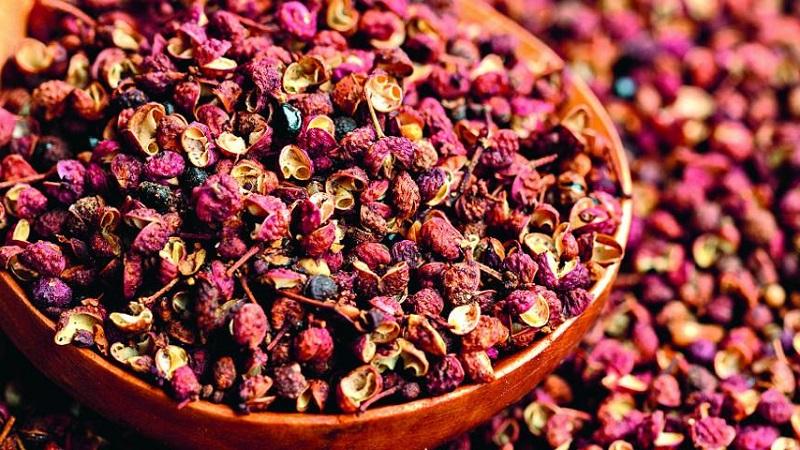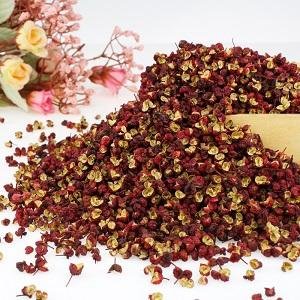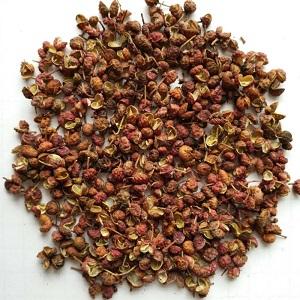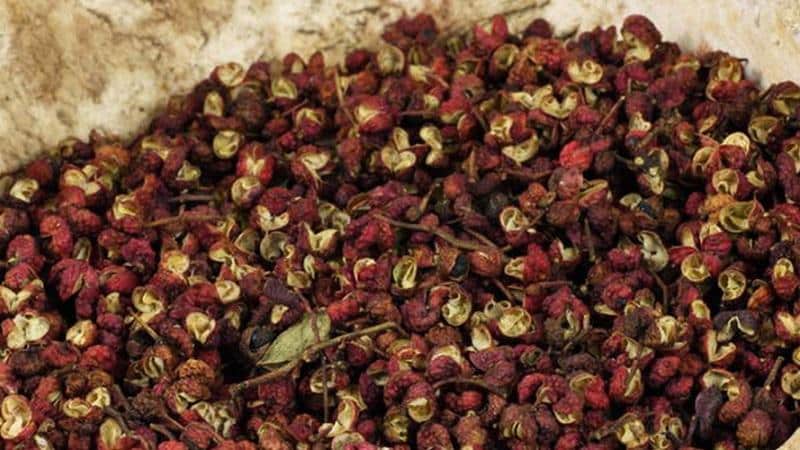What kind of seasoning is Sichuan pepper, how to use it correctly and what can be replaced with it
In this article we will talk about such a spice as Sichuan pepper. It is a very popular food additive in national Chinese, Japanese, Indonesian, Tibetan and Nepalese cuisines. It also has other names: chopi, sancho, lemon or anise pepper, huazao, Chinese coriander, etc.
This is not the most common seasoning for European cuisine, but it is clearly worth taking a closer look at. What does Sichuan pepper taste like, is it beneficial or harmful to our body, and what can we cook with it? We’ll look at all of this below.
What it is
Let's say right away that in the botanical sense it is not a pepper at all. It has nothing in common with all known black or red pepper.
The seasoning itself is small, open round boxes. - fruits of trees of the genus Zanthoxylum, or yellowwood. This plant belongs to the rue family (it also includes limes, lemons, grapefruits, oranges and other citrus fruits).
There are seeds inside the boxes, but they are very bitter and are not eaten.
The tree grows in China, Japan, India, Nepal, Korea and Taiwan. In China, there is generally a province of the same name - Sichuan (Sichuan). Depending on the place of growth, various subspecies are distinguished, but all of them are Sichuan pepper. It is usually a thorny bush about 4-7 m high with small yellow flowers. They form brown boxes, which are used as a spice.
The photo shows what ready-to-eat yellowwood looks like.

Read also:
Miracle cheap remedy - garlic juice
Taste and aroma
The seasoning has the aroma of lemon, anise, nutmeg, camphor and evengol. It does not have a strong burning sensation, but does tingle slightly. An important distinguishing feature is the feeling of cold and freshness in the mouth.
Taste may vary depending on the type:
- Huazao (China, Taiwan) – the weakest aroma, moderate pungency. The leaves are also used as a seasoning.
- Sancho (Korea) – medium-hot fruit with the aroma of basil and anise.
- Sanse (Japan) – mildly hot fruit with a lemon aroma. The leaves have a minty-citrus taste and are also used in cooking.
- Indian prickly pepper (India) – the taste and aroma are most pronounced. The fruits are large and prickly; before serving, they are removed from the finished dish.
How to make seasoning
In autumn, when the fruits open and turn dark brown, it's time to harvest. They are dried, the internal seeds are removed, and a dry capsule remains.
It is possible to buy seasoning in completely different forms: whole dried boxes, ground pepper, mixed with other spices, with the addition of salt and even oil, or in the form of a paste with honey. For example, there is the Five Spice seasoning. It contains Sichuan pepper, cumin, cloves, anise and cassia powder.
Another famous exotic seasoning, Shitimi, is a mixture of seven spices. In addition to anise pepper, it contains sesame, nori seaweed, poppy and hemp seeds, other types of pepper, fried orange zest and grated ginger.
Composition and properties
100 g of pepper contains 38 g carbohydrates, 8 g fat and 5 g protein. Calorie content of the product – 244 kcal per 100 g.
Sichuan pepper is rich in vitamins (thiamine, carotene, pyridoxine, vitamin A), minerals, essential oils and antioxidants.
 Of macro- and microelements it contains zinc, selenium, potassium, iron, copper, manganese, phosphorus, etc.
Of macro- and microelements it contains zinc, selenium, potassium, iron, copper, manganese, phosphorus, etc.
The seasoning has the following properties:
- antioxidant;
- anti-inflammatory;
- deodorizing;
- rejuvenating;
- tonic;
- pain reliever (for teeth);
- restorative.
Harm and benefit
Since the product contains a large amount of useful substances, it the positive effect on the body is in a fairly wide range:
- Zinc strengthens the immune system.
- Iron increases hemoglobin levels in the blood and stimulates blood circulation.
- Potassium strengthens the cardiovascular system and helps lower blood pressure.
- Various compounds speed up metabolism.
- The minerals in the seasoning have a beneficial effect on bones (prevention of osteoporosis).
- Antioxidants prevent the development of serious diseases (such as cancer).
- The unique compound hydroxy-alpha sansshul is considered a natural pain reliever. Causes numbness, which helps cope with toothache.
It turns out that This seasoning has not only culinary, but also medicinal uses..
It will be interesting:
Despite all the positive qualities, like any hot product, Chinese coriander can cause harm. Excessive consumption may result in long-term numbness in the mouth and problems with the digestive tract (for example, heartburn). Therefore, it is not recommended to use the seasoning as an independent dish.
Contraindications:
- pregnancy and lactation;
- stomach ulcer;
- ulcerative colitis;
- diverticulitis;
- individual intolerance (allergy).
How to choose and where to buy
 This is not a very common seasoning in Russia, and difficulties often arise with its acquisition.. You should look for it in specialized stores with Thai, Korean, Indian or Chinese products. You might be able to find it in the large spice section of the supermarket.
This is not a very common seasoning in Russia, and difficulties often arise with its acquisition.. You should look for it in specialized stores with Thai, Korean, Indian or Chinese products. You might be able to find it in the large spice section of the supermarket.
It’s easier in large cities: in Moscow, Sichuan pepper is sold in “Indian Spices” on Sukharevskaya, in “Thai Products” on Akademicheskaya and Myakinino.
In small towns it may not be available at all. In this case, it is very convenient to use the services of online stores with delivery to your desired location.
A high-quality seasoning should not contain seeds or twigs, only opened boxes. Color ranges from dark ocher to brownish brown depending on the species. Ground pepper from an unscrupulous manufacturer may contain additional substances, so it is better to buy it whole.
Use in cooking
There are three rules, subject to which pepper will reveal its taste and aromatic qualities to 100%:
- Place in soups no earlier than 10-15 minutes before the end of cooking.
- When adding to meat or fish, it is advisable to supplement the dish with other spices.
- Before adding the boxes to the dish, fry them without oil over low heat and then crush them.
The spice is added not only to soups and main courses, but also to various sauces., sauces and marinades.
Reference. During heat treatment, the aroma is lost, so seasoning should be added a few minutes before the dish is ready.
What goes with it?
The best additions to Chinese coriander are anise and ginger.. It also goes well with:
- dill;
- black, white and cayenne pepper;
- Thai chili;
- garlic;
- fennel;
- cloves;
- cinnamon.

What to replace
The specific taste and aroma of anise pepper has no complete analogues among other seasonings.. In extreme cases, you can use white pepper or a mixture of black pepper and coriander in equal proportions. This mixture will give a light citrus aroma, tartness and pungency, but there will be no chill or numbness.
Let's sum it up
Sichuan pepper is a unique seasoning with a special rich taste and aroma. Finding a worthy replacement for the small brown boxes of yellowwood is very difficult. In any case, the flavor composition will no longer be the same as it should have been initially. Therefore, it is better to be patient and find this Asian spice to prepare a delicious exotic dish.